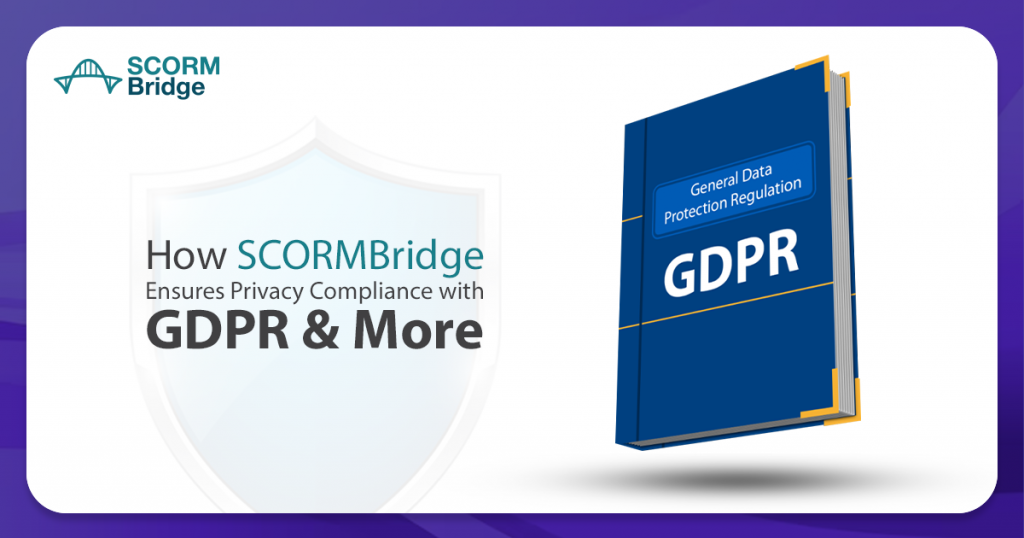
How SCORMBridge Ensures Privacy Compliance with GDPR and More
Introduction
In the world of eLearning, privacy compliance is a key concern, especially with regulations like the General Data Protection Regulation (GDPR) setting strict standards for how personal data is handled. For content providers using SCORMBridge, maintaining compliance with these regulations while delivering SCORM content can be a challenge. SCORMBridge offers anonymization features to help protect learner data, but it’s important to understand how these work in practice and the implications for content creators. In this post, we’ll discuss how SCORMBridge supports privacy compliance and clarify the roles and responsibilities under GDPR.
1. Anonymization of User Data
SCORMBridge allows content creators to anonymize user data when delivering SCORM content. This process helps protect the identities of learners by using one-way hashing, ensuring that personal data is not stored. However, anonymization comes with some challenges, particularly around conflict management. For instance, if a client questions the number of users accessing the course, the anonymized data may limit your ability to provide detailed information. As such, it’s crucial to choose the appropriate anonymization level based on your reporting and compliance needs.
2. Understanding the Role of SCORMBridge in GDPR Compliance
Under GDPR, SCORMBridge acts as a Sub-processor, with the content creator (the organization delivering the course) being the Processor, and the client organization (the one using the content) acting as the Data Controller. This structure means that SCORMBridge processes data on behalf of the content creator, while the content creator must ensure that the data subject (the learner) is informed of how their data is being processed.
If necessary, SCORMBridge can sign a Data Processing Agreement (DPA) with the content creator, documenting the specific responsibilities and clarifying the data processing relationship between the parties.
3. Handling Data Deletion and Retention
SCORMBridge does not manage user data retention or automatic deletion. All actions related to data management, including deletion or retention of learner information, are done strictly based on instructions from the Data Controller (the client organization) or the Processor (the content creator). This ensures that SCORMBridge follows the legal and contractual obligations outlined by the Data Controller regarding how learner data should be handled.
4. Choosing the Right Anonymization Approach
When anonymizing data, content creators need to balance privacy with the ability to manage and report on course usage. Over-anonymization could lead to issues when resolving disputes about the number of active users or other similar queries. SCORMBridge allows content providers to select the appropriate anonymization level based on their needs, ensuring compliance while retaining some visibility into course usage metrics.
Conclusion
SCORMBridge helps eLearning content providers comply with GDPR by offering anonymization features and supporting a clear structure in the data processing chain. However, as with any privacy-related technology, it’s important to understand the limitations and responsibilities involved. SCORMBridge serves as a Sub-processor, acting according to the instructions of the Data Controller or Processor, ensuring that data handling is always compliant and secure. For more complex data processing needs, a DPA can be signed to clearly document the relationship and responsibilities.
Have questions or need assistance? Visit our Contact Us page and connect with our team at sales@succeedtech.com
Follow our official LinkedIn page for the latest insights and updates on effortless SCORM content delivery.
